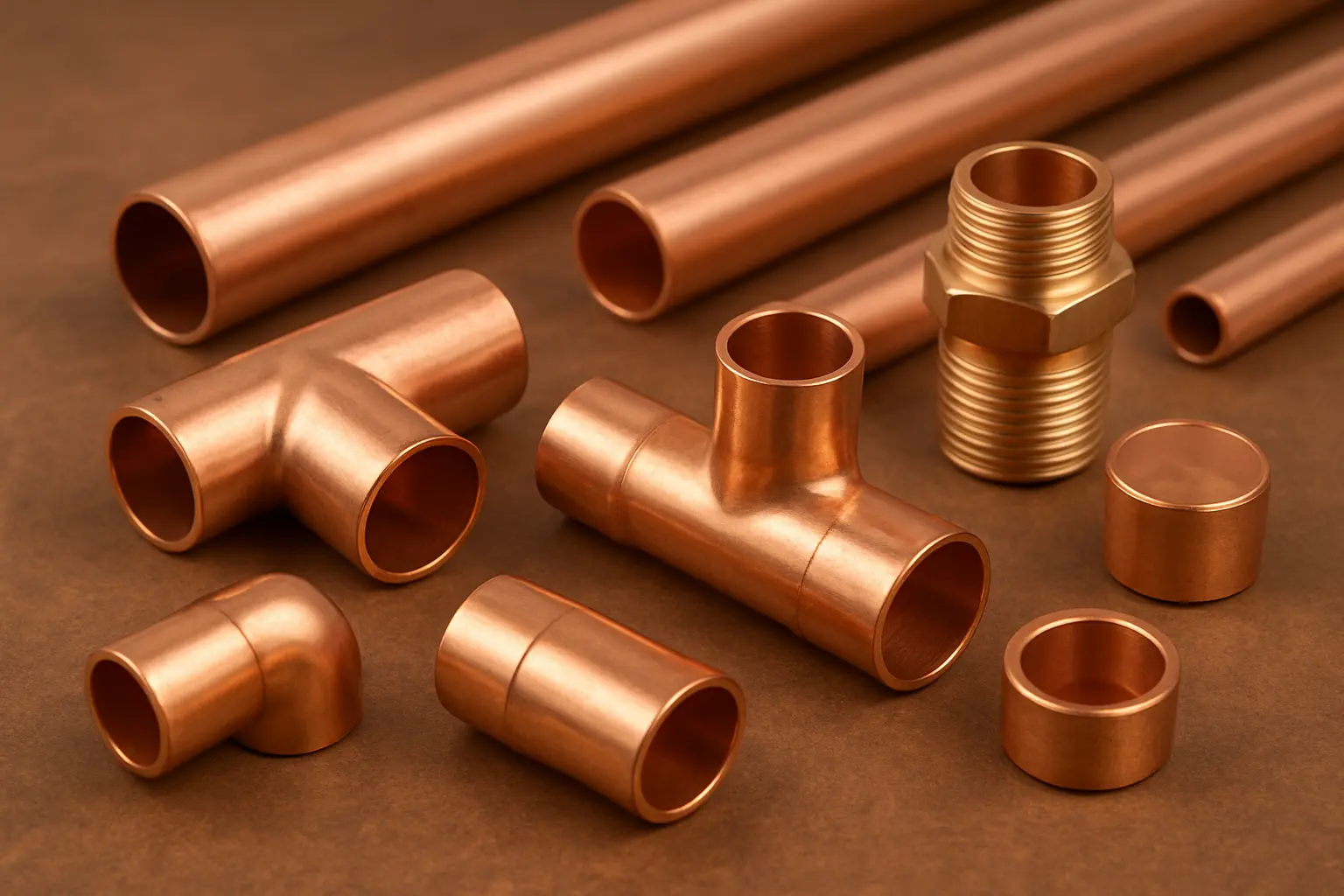Copper Products
Copper Products
Globagon supplies copper products engineered to meet diverse customer requirements, delivering reliable performance in plumbing, HVAC, electrical, and industrial applications. Our copper pipes and fittings are designed for excellent thermal and electrical conductivity, corrosion resistance, and long service life, ensuring consistent quality across demanding environments. Available in a wide range of sizes, wall thicknesses, and connection types, our copper solutions support applications such as water distribution, gas lines, refrigeration, and heat exchangers. Manufactured with precision processes and strict quality control, Globagon copper products ensure leak-tight performance, compatibility with global standards, and contribute to the safety, efficiency, and durability of critical systems.
How Does a Distance Piece Work?
The distance piece is a separable housing that connects the compressor cylinder to the frame and plays a key role in isolating internal components. Depending on the application, it can be open or closed and comes in single, double, or extra-long configurations, often with multiple internal compartments to suit specific process requirements.
In non-lubricated service, a longer distance piece is essential for keeping the piston rod area that enters the crankcase separate from the portion exposed to process gas. This separation prevents oil contamination in the cylinder and allows for the use of synthetic lubricants when needed, maintaining gas purity and system integrity.
In compressors handling toxic or flammable gases, the internal compartments of this part help manage packing leakage by containing and directing escaped gas. Leaked gases can be vented to a flare system or controlled with a buffer gas, ensuring safe operation and minimizing environmental risk.
Display
Details
The distance piece in reciprocating compressors serves a highly specialized and essential function, particularly in systems handling hazardous, high-purity, or oil-free gases. Far from being a simple structural element, this part acts as a critical barrier between the compressor frame and the cylinder, effectively isolating the crankcase from the process gas environment. This separation is fundamental, both for maintaining the mechanical integrity of the compressor and for upholding safety standards, gas purity, and regulatory compliance.
There are several configurations of distance pieces, typically classified as Type A (short), Type B (long), Type C (double), and Type D (extra-long), with each design tailored to specific operational requirements. In oil-free or non-lubricated compressors, longer pieces are generally preferred. This is because they provide a greater physical separation between the crankcase and the gas end, which enables the installation of multiple seal compartments and vent ports. These features are vital for managing potential gas leakage and preventing cross-contamination between lubricated and non-lubricated areas of the compressor.
The internal structure of the distance piece usually includes compartmentalization formed by packing cases or seal assemblies around the piston rod. This setup allows any gas that leaks past the primary packing to be captured in intermediate compartments, where it can be vented safely or managed with buffer gases. Such compartmentalization not only protects the crankcase from hazardous gases but also facilitates the early detection of packing wear or failure by monitoring pressure changes within each compartment.
In applications involving toxic, corrosive, or flammable gases, the importance of this isolation feature increases significantly. The distance piece’s design allows leaked gases to be vented to secure locations, such as flare stacks or vapor recovery systems, thereby mitigating risks to personnel and the environment. Moreover, the use of inert buffer gases—often nitrogen—between compartments further enhances containment by creating a pressure gradient that prevents process gas from migrating toward the crankcase.
A further function of the distance piece is related to lubrication management. Where gas purity is a critical requirement, it is imperative to prevent oil-based lubricants from contacting the process gas. The distance piece enables this by physically separating the crankcase oil from the piston rod and cylinder, thus supporting the use of synthetic lubricants or dry-running components and minimizing the risk of gas contamination.
Maintenance considerations are also integrated into modern designs. Many compressors now feature removable covers or inspection ports on the distance piece, allowing for regular inspection and maintenance of the rod packing and seals without necessitating complete disassembly. This significantly streamlines maintenance procedures and reduces operational downtime.
In sum, the distance piece constitutes far more than a mere connector between the frame and cylinder. It is a complex, engineered barrier system designed to prevent cross-contamination, manage leakage, uphold gas purity, and ensure the safe, reliable operation of reciprocating compressors under demanding conditions. Its role is indispensable in both performance optimization and regulatory compliance across a wide range of applications.









